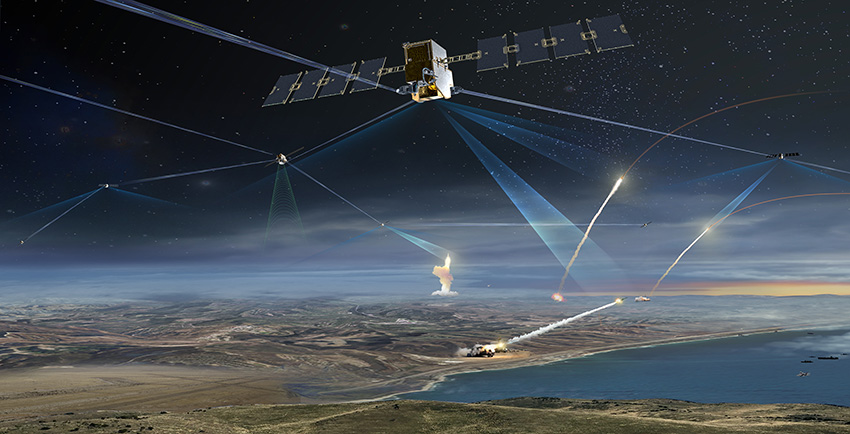Northrop Grumman Completes Critical Design Review for the Space Development Agency’s Tranche 1 Tracking Layer
REDONDO BEACH, Calif., November 15. Northrop Grumman Corporation recently completed its Critical Design Review (CDR) on a proliferated low-Earth orbit constellation of 16 missile tracking satellites for the Space Development Agency, clearing the way to begin production work on the space vehicles.

- The CDR maintained an accelerated pace and was completed within 13 months of the award announcement.
- The satellites are part of the Tranche 1 Tracking Layer (T1TRK) that will identify and track hypersonic weapons and advanced missiles from the earliest stages of launch through interception.
- Once in orbit, the satellites will operate in two of four low-Earth orbital planes, interconnected with Tranche 1 Transport Layer (T1TL) – another element of SDA’s Proliferated Warfighter Space Architecture (PWSA) designed as a high-speed, high-volume data transport network connecting US forces around the globe.
Expert:
Candace Givens, vice president, overhead persistent infrared and geospatial systems, Northrop Grumman: “We are developing a more responsive, flexible and resilient space architecture to counter sophisticated threats. By passing this critical milestone on an accelerated timeline, we are closer to delivering critical missile defense and tracking technologies.”
Details on the PWSA:
Fourteen of the satellites for T1TRK will feature a wide field-of-view sensor, three optical communications terminals and a Ka-band payload for communications. Two satellites will feature a medium field-of-view infrared sensor to demonstrate a fire-control solution.
Northrop Grumman is a leading contractor providing both space vehicles and ground systems for SDA’s PWSA, a next-generation constellation in low-Earth orbit. The company continues to leverage this growing industry base of capable suppliers to support this critical mission. PWSA has two major lines of effort:
- The Tracking Layer: Focused on developing a global constellation of infrared missile warning and missile tracking satellites that integrate with the Transport Layer’s low-latency meshed communication network, enabling conventional and advanced missile tracking from proliferated low-Earth orbit.
- The Transport Layer: Designed to provide low-latency, high-volume data connectivity supporting US military missions around the world.
To date, SDA has awarded Northrop Grumman 132 satellites. In March, Northrop Grumman successfully completed a Critical Design Review for T1TL. In October, SDA awarded Northrop Grumman a contract to design and build 38 satellites as part of Tranche 2 Transport Layer – Alpha (T2TL-Alpha).
Northrop Grumman is a leading global aerospace and defense technology company. Our pioneering solutions equip our customers with the capabilities they need to connect and protect the world, and push the boundaries of human exploration across the universe. Driven by a shared purpose to solve our customers’ toughest problems, our employees define possible every day.
(This research was, in part, funded by the US Government. The views and conclusions contained in this document are those of the authors and should not be interpreted as representing the official policies, either expressed or implied, of the US Government.)





